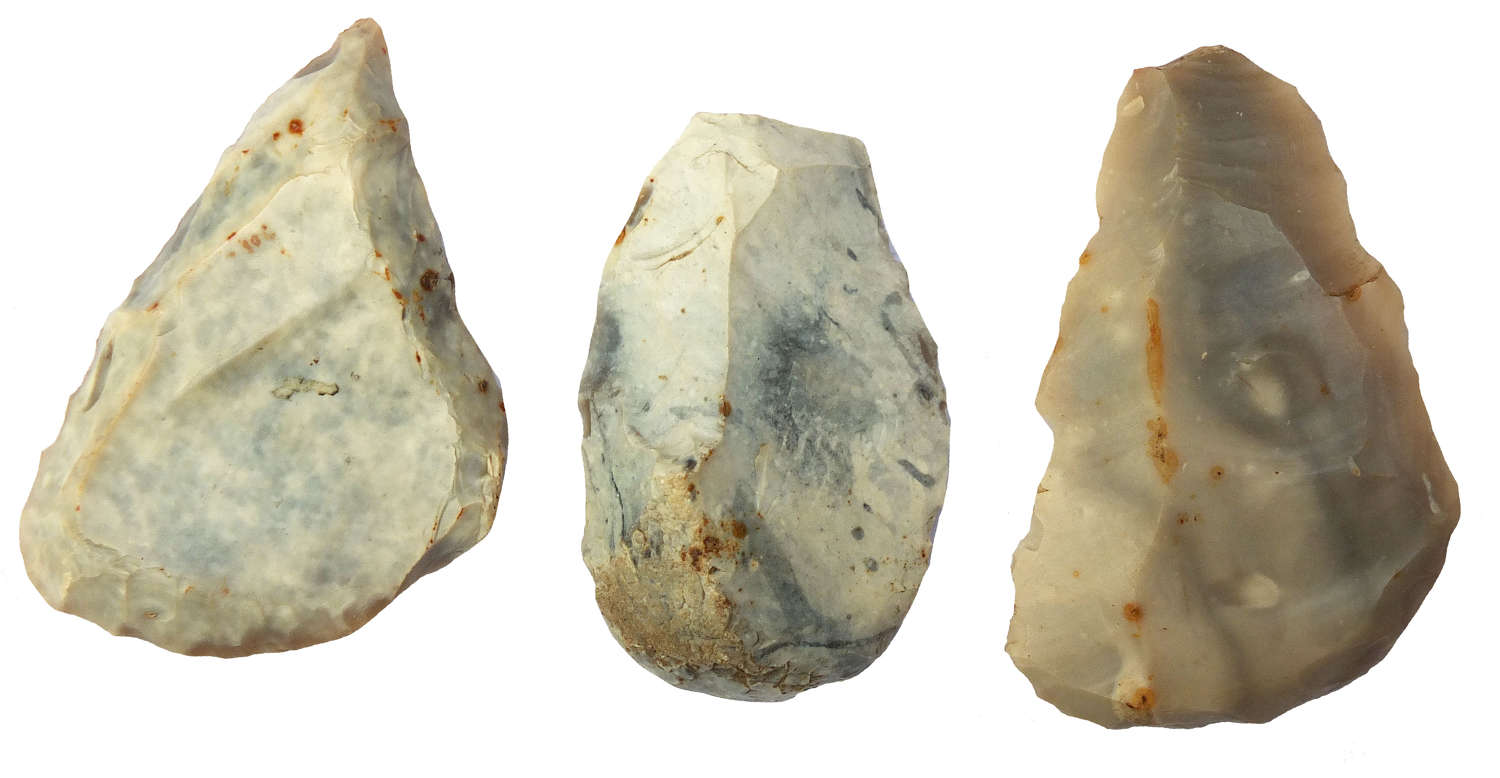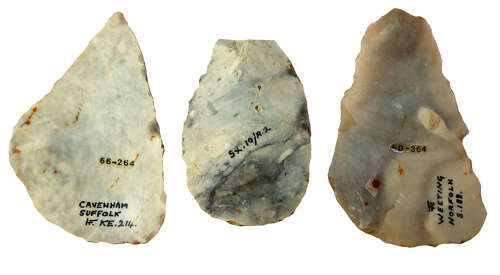

Code: 2760
Description: A group of three grey flint tools. One, a knife fashioned from a broad triangular flake with one end fashioned to a point (possibly for use as an awl) with blue-white patination, found at Cavenham, Suffolk; the second, an end-scraper with abrupt retouch and blue-white patination (not marked with locality but possibly from Sussex); and the third, an end-scraper fashioned from a thin sub-triangular flake found at Weeting, Norfolk.
Size: 59-68 mm/2.3-2.7 ins. in length
Culture: Neolithic
Date: c. 2000-3500 B.C.
Provenance: One ex Dr. H.A. Fawcett Collection with his collectors mark, one ex F.S. Clark Collection, Woking, Surrey, with his collectors mark.
Background: Dr. Hugh Alderson Fawcett (1891-1982) was a general practitioner and antiquarian who built up an important collection of ancient implements, weapons and ornaments that eventually numbered some eight thousand items. It was he who alerted the British Museum to the discovery of the fabulous Mildenhall treasure after being shown it by Sydney Ford during Easter in 1946. The bulk of his collection is now in the Bristol Museum and Art Gallery, but Fawcett previously sold or traded many pieces in order to improve his collection. His distinctive monogram and careful recording of provenance makes his pieces readily identifiable.
Fred Sydney Clark (1923-2016) ran the Old Curiosity Shoppe, The Quadrant, Onslow Street, Guildford, Surrey, in the 1970’s-1980’s selling a range of collectables. A passionate collector and field-walker, he built up a fine collection of antiquities, notable for British prehistoric items, a significant number of which he obtained through trade with Dr. H.A. Fawcett. Like Fawcett, he was meticulous in documenting his collection, even the most humble tools were catalogued and fully labelled with locality, accession number and his characteristic monogram.